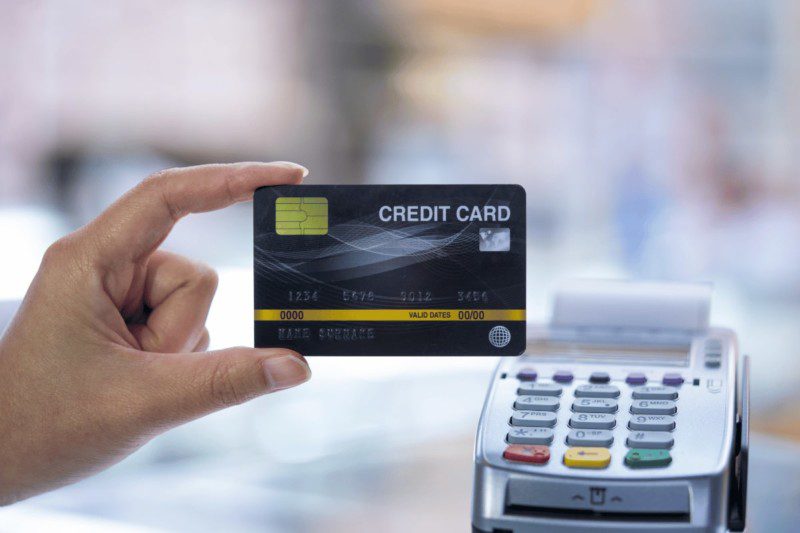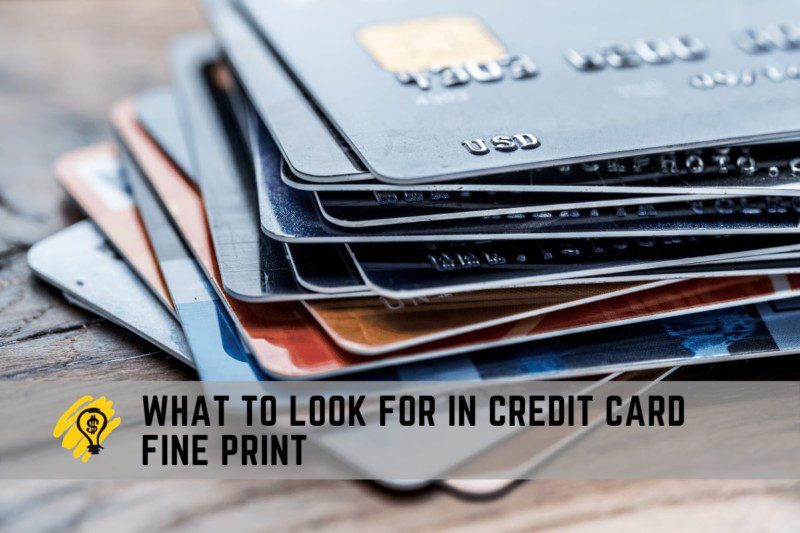When you get a credit card offer or when you sign up for a new credit card, you’ll probably get a lot of information that comes with it. You might skip right over that fine print, including the credit card terms and conditions, and that can end up being a big mistake.
The following are some things to know about the fine print in both credit card offers and agreements.
Interest Rates and Charges
Interest rates and charges are one of the most important areas to look for in the fine print.
Your APR is the rate that will be applied to whatever your outstanding balance is at the end of every pay period if you don’t pay in full. Most APRs for credit cards are variable, meaning they can go up or down with the prime rate. You also have to look at how the card issuer sets the rate, which is an addition to the prime rate.
A penalty APR is one of the main things to look for—if you miss a payment, an issuer will usually apply this, and it can be at the high end of whatever your regular variable APR is.
Your penalty APR can be variable depending on your credit. In your card agreement, this may be given as a range. If you don’t make a payment or maybe two, then the fees can go up, and they can stay at this for an indefinite amount of time. Your credit card issuer is required to give at least 45 days’ notice before they increase those fees.
Some cards will put a minimum on the interest charges, and there should be a grace period listed. The grace period is how many days are between the close of your billing cycle and the day your payment is due. If you’re able to pay the balance off in this period of time, you don’t incur interest.
Fees
Fees can include an annual membership fee, which is how much you’ll pay just to have the card for the year. You might get a special deal where the fee is waived initially for the first year, but then you’ll have to pay, so don’t overlook this.
Transaction fees can include a cash advance fee, balance transfer fee, and foreign transaction fees.
Your penalty fees are what you have to pay if you make a late payment, go beyond your credit limit, or you have a returned payment.
Fees add up fast with credit cards.
If you make certain transactions, like getting a cash advance, the fees for that will usually start to accrue interest right away, and if it’s a reward card, these are probably not going to be included in that calculation.
Rewards and Benefits
If you get a credit card for rewards or benefits, like points or cash back, you should read your terms and conditions because they aren’t very protected. They can be removed, devalued, or changed, and that can have a negative effect on you. Unlike other aspects of credit card usage, there’s not a lot of regulation of rewards.
Some cards, and especially cash-back cards, will have caps on rewards. As an example, maybe you earn 5% cash back on the first $1,500 you spend in a certain category, but then after you hit that limit, maybe the cash back goes to 1%.
You have to read more about eligible purchases, especially if you’re getting a card only for the rewards and perks. As mentioned above, there may be types of transactions that don’t qualify for rewards, like a cash advance or buying gift cards.
If you’re getting a card that offers increased rewards for certain types of purchases based on the merchant, like increased rewards for grocery store spending, read what counts toward this category and what doesn’t.
Check for minimum redemption rules – maybe you have to claim your cash back in certain increments.
With a travel rewards card, you might have to redeem your points or rewards through the card issuer’s portal.

Inactivity
If you don’t use a credit card for a year or more, the company that issues it might close your account. Inactivity is one of the number one reasons accounts are canceled. If your account isn’t being used, the issuer isn’t making money. A card issuer can only extend so much credit, so they might want to cancel your account, so they’re able to give credit to someone else. Card companies also don’t have to give you notice of this.
There are a few downsides to this.
The biggest is that a closed account can affect your credit score negatively in several ways.
One is that your available credit goes down. Your credit utilization ratio is a percentage of available credit you’re using, and the lower, the better. If you have a card that gave you $5,000 in available credit and it was unused, and then that account is closed, your credit utilization ratio will go up.
A closed account will also affect the average age of your accounts. If you’ve had a card that got canceled for a long time, then the average age of your accounts will go down. Longer is better with your credit history as far as how it affects your score.
Your credit mix can also take a hit. A good credit report will include a mix of types of credit, including installment loans with equal, set monthly payments and credit accounts. If you only have one card account and it gets closed, it’s likely to drop your score.
Read the fine print to see if it mentions anything about account inactivity or other reasons that your account could be closed.
Finally, read the fine print about your payments.
The clause about payment allocation in the fine print of your agreement will tell you how your minimum payments are applied. Payments that you make beyond the minimum are applied to the highest APR debt first. Your agreement will also tell you the types of payments accepted, how it’s processed, and details about how your payments are applied.





